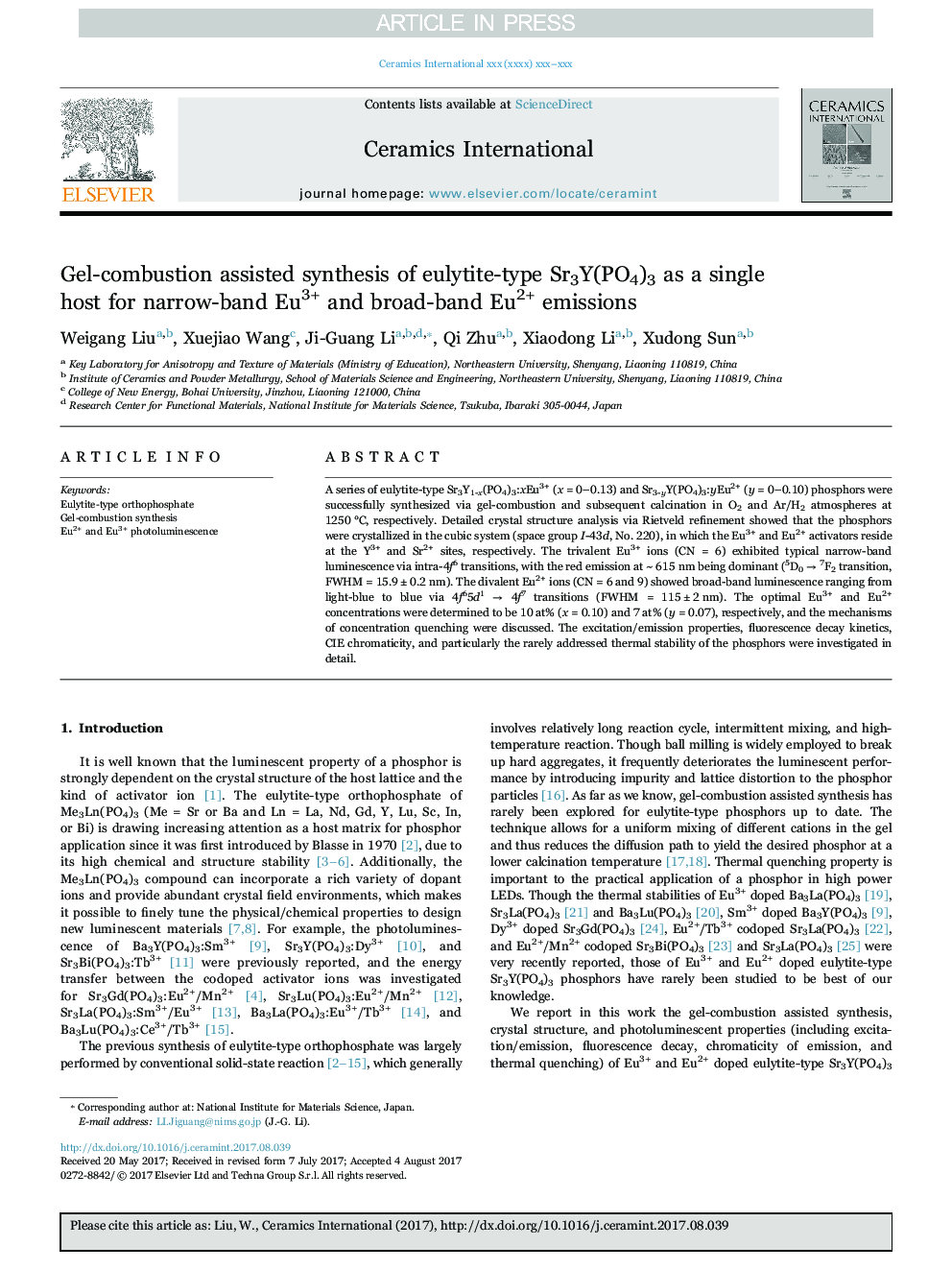| Article ID | Journal | Published Year | Pages | File Type |
|---|---|---|---|---|
| 5437402 | Ceramics International | 2017 | 8 Pages |
Abstract
A series of eulytite-type Sr3Y1-x(PO4)3:xEu3+ (x = 0-0.13) and Sr3-yY(PO4)3:yEu2+ (y = 0-0.10) phosphors were successfully synthesized via gel-combustion and subsequent calcination in O2 and Ar/H2 atmospheres at 1250 °C, respectively. Detailed crystal structure analysis via Rietveld refinement showed that the phosphors were crystallized in the cubic system (space group I-43d, No. 220), in which the Eu3+ and Eu2+ activators reside at the Y3+ and Sr2+ sites, respectively. The trivalent Eu3+ ions (CN = 6) exhibited typical narrow-band luminescence via intra-4f6 transitions, with the red emission at ~ 615 nm being dominant (5D0 â 7F2 transition, FWHM = 15.9 ± 0.2 nm). The divalent Eu2+ ions (CN = 6 and 9) showed broad-band luminescence ranging from light-blue to blue via 4f65d1 â 4f7 transitions (FWHM = 115 ± 2 nm). The optimal Eu3+ and Eu2+ concentrations were determined to be 10 at% (x = 0.10) and 7 at% (y = 0.07), respectively, and the mechanisms of concentration quenching were discussed. The excitation/emission properties, fluorescence decay kinetics, CIE chromaticity, and particularly the rarely addressed thermal stability of the phosphors were investigated in detail.
Keywords
Related Topics
Physical Sciences and Engineering
Materials Science
Ceramics and Composites
Authors
Weigang Liu, Xuejiao Wang, Ji-Guang Li, Qi Zhu, Xiaodong Li, Xudong Sun,
